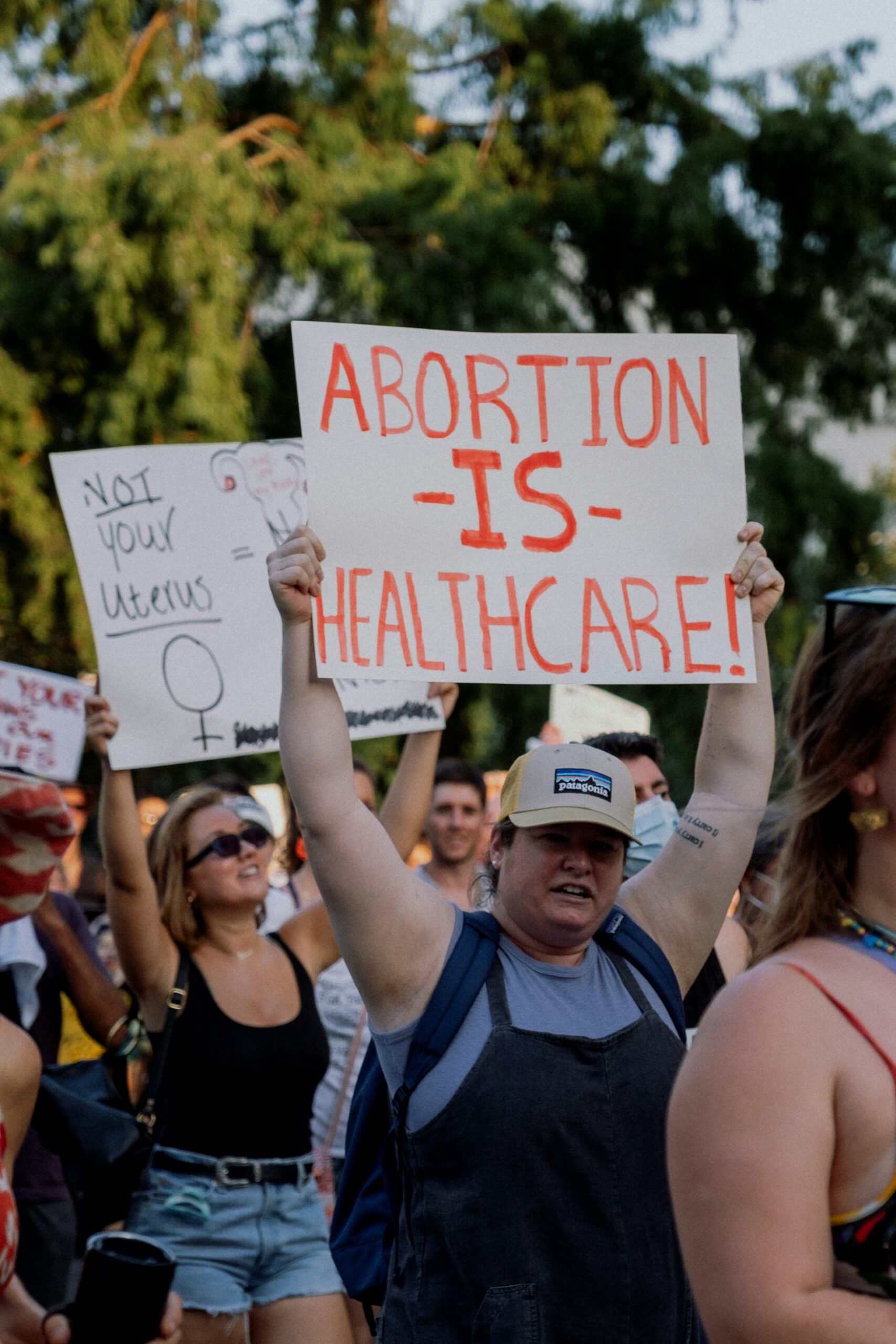How Preventive Healthcare Measures Can Transform Your Well-Being

Photo by Nappy on Unsplash
Introduction: Proactive Health for a Better Future
Preventive healthcare measures are the cornerstone of a healthier, longer, and more productive life. Rather than waiting for illness to strike, preventive care focuses on early detection, risk reduction, and intervention before health issues become severe. By adopting these proactive strategies, individuals and communities can significantly lower the risk of chronic diseases, reduce healthcare costs, and enhance quality of life. Despite strong evidence supporting these benefits, millions of people in the United States still do not receive recommended preventive services, often due to barriers such as cost, lack of awareness, or limited access to care [2] [3] .
Understanding Preventive Healthcare: What Does It Include?
Preventive healthcare involves a wide range of services designed to identify and address potential health risks before they escalate. These services typically include:
- Screenings: Early detection of conditions such as cancer, heart disease, diabetes, and high blood pressure can lead to timely treatment and better outcomes. For example, routine mammograms or colonoscopies can identify cancer in its earliest stages [5] .
- Vaccinations: Immunizations protect individuals and communities from infectious diseases such as measles, influenza, and HPV, significantly reducing morbidity and mortality rates [1] .
- Counseling Services: Guidance on smoking cessation, healthy eating, physical activity, and mental health can prevent the onset of many chronic conditions [1] .
- Annual Wellness Checks: Regular checkups provide opportunities for your healthcare provider to monitor your overall health, update vaccinations, and discuss risk factors based on family history and lifestyle [4] .
For children, preventive healthcare incorporates well-child visits, vaccinations, and screenings for developmental or environmental risks such as lead poisoning. For adults, it covers regular monitoring for age-related risks and lifestyle counseling [5] .
Key Benefits of Preventive Healthcare Measures
Investing in preventive healthcare has both immediate and long-term advantages:

Photo by Marek Studzinski on Unsplash
- Early Detection and Treatment: Identifying health issues before symptoms appear makes it possible to intervene early, increasing chances of successful treatment and sometimes even preventing the disease from developing altogether [4] .
- Longer Lifespan: Studies have shown that preventive measures such as regular screenings, vaccinations, and healthy lifestyle choices can add years to your life by reducing the risk of life-threatening diseases [1] .
- Improved Quality of Life: Preventing disease helps individuals maintain independence, stay active, and avoid complications that can limit daily activities [4] .
- Reduced Healthcare Costs: Preventive care is cost-effective, saving both individuals and healthcare systems substantial expenses by reducing the need for complex treatments and hospitalizations [1] .
- Lower Disease Burden: On a population level, preventive services decrease the prevalence of chronic diseases and improve community health [3] .
For example, mass vaccination campaigns have resulted in a greater than 90% reduction in diseases like measles and rubella, highlighting the massive societal impact of preventive measures [1] .
Common Barriers to Accessing Preventive Care
Despite the overwhelming benefits, many people still do not receive recommended preventive services. Common barriers include:
- Cost Concerns: Out-of-pocket expenses can prevent individuals from seeking routine screenings or vaccinations, especially for those without adequate insurance coverage [2] .
- Lack of Awareness: Many people are unaware of which preventive services they need or when to get them. This often leads to missed opportunities for early intervention [3] .
- Limited Access to Providers: Living in rural or underserved areas may mean fewer healthcare providers or longer travel times to access care [2] .
- Transportation Challenges: Difficulty reaching clinics or doctors’ offices can be a significant hurdle, especially for older adults or those with disabilities [2] .
To overcome these barriers, it’s important to explore all available resources and support systems. For example, some community health centers offer free or low-cost screenings and vaccinations. Additionally, many insurance plans, including those provided through the Affordable Care Act, cover a range of preventive services with no out-of-pocket costs for in-network providers. You can check your specific coverage by contacting your insurance company or visiting their official website. If you are uninsured, consider contacting your local health department or searching for “community health clinics near me” for affordable options.
How to Access Preventive Healthcare Services
Accessing preventive services doesn’t have to be complicated. Here are step-by-step guidelines for getting started:
- Find a Primary Care Provider (PCP): Your PCP is your first point of contact for preventive care. If you don’t have a doctor, you can search your insurance provider’s directory, ask for recommendations from friends or family, or contact local clinics.
- Schedule Regular Checkups: Routine wellness visits are essential. During these appointments, your doctor will recommend age- and risk-appropriate screenings, vaccinations, and counseling. Adults should generally have an annual checkup, while children require more frequent visits based on age.
- Use Insurance Benefits: Most health insurance plans in the United States are required to cover certain preventive services without cost-sharing. Check your plan’s official documentation or call your provider to verify which services are included. If you have Medicare or Medicaid, visit the official Centers for Medicare & Medicaid Services (CMS) website for detailed preventive benefits information.
- Seek Community Resources: If you are uninsured or underinsured, many local health departments and federally qualified health centers offer free or sliding-scale preventive services. Search online for “community health center” along with your city or county name to find resources in your area.
- Stay Informed: Keep track of recommended screenings and vaccines based on your age, gender, family history, and lifestyle. The Centers for Disease Control and Prevention (CDC) and the U.S. Preventive Services Task Force (USPSTF) are reputable sources for up-to-date preventive guidelines. For specific recommendations, search for “CDC adult immunization schedule” or “USPSTF preventive care recommendations.”
Practical Examples and Real-World Applications
To illustrate the impact of preventive healthcare measures, consider the following examples:
- Cancer Screening: Early detection of breast, colon, or cervical cancer through routine screenings has been shown to reduce mortality rates and improve treatment outcomes. For instance, colonoscopies can prevent colorectal cancer by identifying and removing pre-cancerous polyps [1] .
- Vaccination: The widespread use of childhood and adult vaccines has led to the near-elimination of diseases like polio and smallpox in the United States. These efforts save thousands of lives and prevent costly outbreaks [1] .
- Heart Health: Regular blood pressure and cholesterol checks, combined with lifestyle counseling, have contributed to a dramatic decline in coronary heart disease deaths over the past 50 years [1] .
Implementing preventive measures at the community level, such as public health campaigns for smoking cessation or healthy eating, can further reduce chronic disease rates and boost population health.
Alternative Approaches and Overcoming Challenges
If you face challenges accessing traditional healthcare settings, consider these alternatives:
- Telehealth Services: Many providers now offer virtual visits for preventive counseling, mental health support, and follow-up care. Check with your provider or insurer to see what telehealth options are available.
- Mobile Clinics: Some communities operate mobile health units that visit neighborhoods to provide screenings and vaccinations. Search for “mobile health clinic” and your location to find upcoming events.
- Workplace Wellness Programs: Many employers offer on-site health screenings, flu shots, or wellness challenges. Ask your HR department about available programs.
If you encounter cost or insurance barriers, local nonprofits and advocacy organizations may offer assistance. You can also contact your state’s health department for information about state-sponsored preventive initiatives.
Key Takeaways and Next Steps
Preventive healthcare measures are essential for reducing disease risk, extending lifespan, and improving quality of life. Early detection, routine screenings, and vaccinations are proven strategies that benefit individuals and society as a whole. While barriers such as cost and access remain, numerous resources are available to help you get the care you need. To get started, establish a relationship with a primary care provider, schedule regular checkups, and stay informed about recommended preventive services for your age and risk profile. If you are unsure where to begin, visit the official websites of the Centers for Disease Control and Prevention (CDC), the U.S. Preventive Services Task Force (USPSTF), or your local health department for the most current guidelines and support options.
References
- AbdulRaheem, Y. (2023). Unveiling the Significance and Challenges of Integrating Preventive Services. National Institutes of Health.
- Office of Disease Prevention and Health Promotion (2024). Prevention Is Still the Best Medicine.
- Healthy People 2030. Preventive Care Objectives. Office of Disease Prevention and Health Promotion.
- Creyos Health (2025). Why Preventive Care Is Important.
- Healthline (2025). Preventive Health: What Is It and Why Is It Important?
MORE FROM promohunterpro.com













